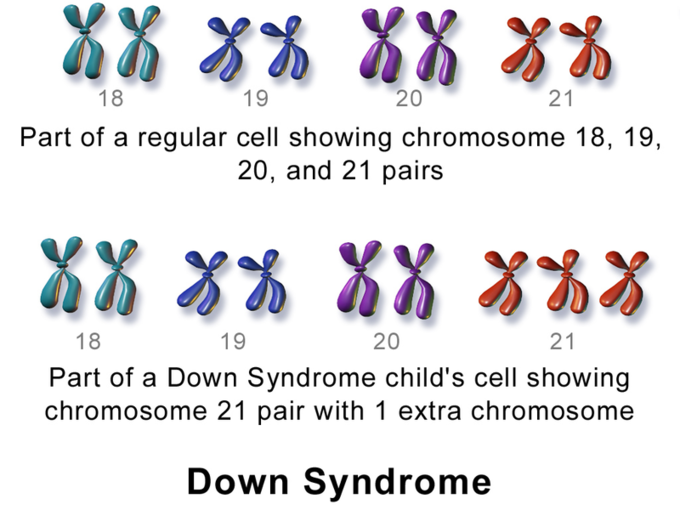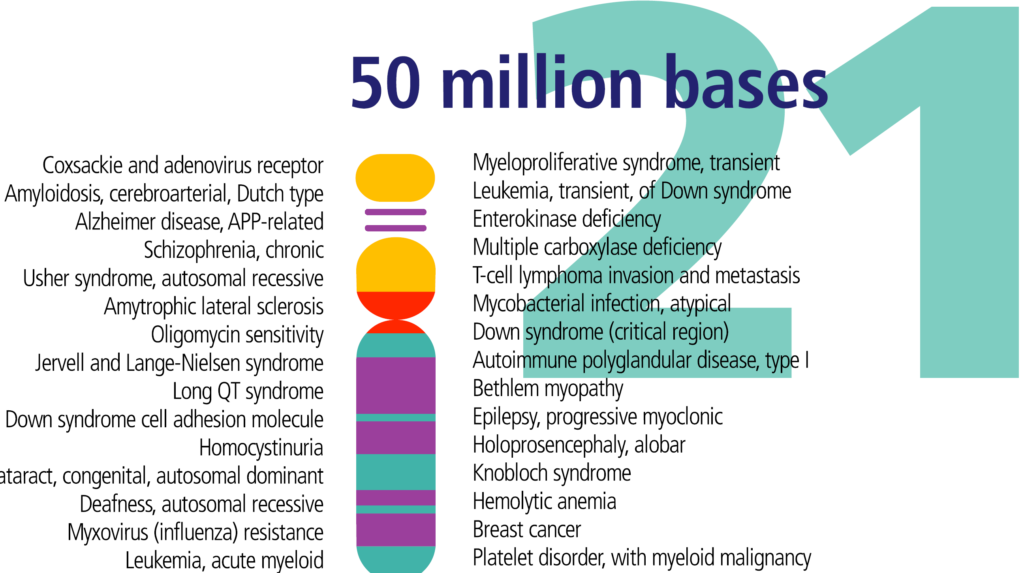Down Syndrome, often abbreviated as DS, is a genetic condition that affects individuals worldwide. It is one of the most common chromosomal disorders and is characterized by distinct physical features, developmental delays, and potential health complications. This article delves into the causes, features, and support systems available for individuals with this condition, offering a comprehensive understanding of its impact on both individuals and families.

Understanding the Causes of Down Syndrome
Down Syndrome occurs due to an extra copy of chromosome 21, leading to a total of three copies instead of the usual two. This additional genetic material disrupts the normal course of development, resulting in the characteristics associated with the condition. The occurrence of this extra chromosome can be attributed to three primary types of chromosomal abnormalities:
Trisomy 21
- This is the most common form, accounting for approximately 95 percent of cases.
- It occurs when there is an error in cell division during the formation of reproductive cells, leading to an embryo with three copies of chromosome 21.
Translocation
- In this type, part of chromosome 21 attaches to another chromosome, usually chromosome 14.
- This accounts for about 3 to 4 percent of cases and may involve inherited genetic factors.
Mosaicism
- Mosaicism is the rarest form, occurring in only 1 to 2 percent of cases.
- It happens when some cells in the body have the typical two copies of chromosome 21, while others have three copies.
The exact cause of these chromosomal errors is not fully understood, but certain risk factors, such as advanced maternal age, have been identified as contributing elements. However, it is essential to note that this condition can occur in any pregnancy, regardless of age or background.
Physical and Developmental Features
Individuals with Down Syndrome often exhibit a range of physical and developmental characteristics. While these features can vary widely among individuals, some common traits include:
Physical Characteristics
- A flattened facial profile, particularly around the nose.
- Almond-shaped eyes that slant upward.
- A single deep crease across the palm of the hand.
- Shorter stature compared to peers.
- Poor muscle tone, which may affect motor skills development.
Developmental Traits
- Delayed cognitive development, which can range from mild to moderate intellectual disability.
- Speech and language challenges, often requiring speech therapy.
- Social and emotional strengths, including a friendly and affectionate demeanor.
- Potential difficulties with attention and memory.
While these features are commonly associated with the condition, it is crucial to recognize that each individual is unique. Some may experience fewer challenges, while others may require more specialized support.
Associated Health Conditions
People with Down Syndrome are at an increased risk of developing certain health conditions. Early identification and management of these issues are vital to ensuring a better quality of life. Some of the most common associated health concerns include:
Congenital Heart Defects
- About half of all infants born with this condition have heart defects, such as atrial septal defect or ventricular septal defect.
- These defects often require surgical intervention shortly after birth.
Hearing and Vision Problems
- Hearing loss is prevalent, often due to recurrent ear infections or structural issues in the ear.
- Vision problems, such as cataracts or refractive errors, are also common and may necessitate corrective lenses or surgery.
Thyroid Disorders
- Hypothyroidism, a condition where the thyroid gland does not produce enough hormones, is frequently observed.
- Regular monitoring and medication can help manage this issue effectively.
Gastrointestinal Issues
- Conditions like celiac disease or gastrointestinal blockages may occur more frequently.
- Dietary adjustments and medical interventions are often necessary to address these challenges.
Support Systems and Interventions
Early and ongoing support plays a critical role in enhancing the quality of life for individuals with Down Syndrome. A multidisciplinary approach involving healthcare professionals, educators, and families is essential to address the diverse needs of these individuals.
Early Intervention Programs
- Programs designed for infants and toddlers focus on physical, cognitive, and social development.
- Therapies such as occupational therapy, physical therapy, and speech therapy are integral components.
Educational Support
- Inclusive education settings allow children to learn alongside their peers, fostering social interaction and skill development.
- Individualized Education Plans (IEPs) ensure that learning objectives are tailored to meet specific needs.
Medical Care
- Regular check-ups with pediatricians and specialists help monitor and manage associated health conditions.
- Screenings for vision, hearing, and thyroid function are particularly important.
Emotional and Social Support
- Families benefit from connecting with support groups and organizations dedicated to raising awareness and providing resources.
- Counseling services can help individuals and families navigate emotional challenges and celebrate milestones.
Advocacy and Awareness
Raising awareness about Down Syndrome is crucial to promoting acceptance and inclusion in society. Advocacy efforts aim to dispel myths, reduce stigma, and highlight the capabilities and contributions of individuals with this condition. Key initiatives include:
World Down Syndrome Day
- Celebrated annually on March 21, this day encourages global recognition and understanding.
- Events and campaigns focus on educating the public and advocating for equal opportunities.
Media Representation
- Increased representation in media helps challenge stereotypes and showcase diverse stories.
- Documentaries, films, and television shows featuring individuals with Down Syndrome contribute to greater visibility.
Policy Changes
- Advocacy groups work to influence policies that promote accessibility, employment opportunities, and healthcare rights.
- Legislation supporting inclusive education and anti-discrimination measures is a priority.
Building Inclusive Communities
Creating inclusive communities requires collective effort from individuals, organizations, and governments. By fostering environments that embrace diversity, we can ensure that people with Down Syndrome lead fulfilling lives. Strategies to achieve this goal include:
Employment Opportunities
- Encouraging businesses to hire individuals with Down Syndrome promotes economic independence.
- Job training programs and workplace accommodations can facilitate successful employment experiences.
Recreational Activities
- Inclusive sports leagues, art classes, and community events provide opportunities for social engagement.
- Participation in these activities fosters friendships and boosts self-esteem.
Accessible Public Spaces
- Designing public spaces with accessibility in mind ensures that everyone can participate fully in community life.
- Ramps, elevators, and sensory-friendly environments are examples of inclusive design features.





